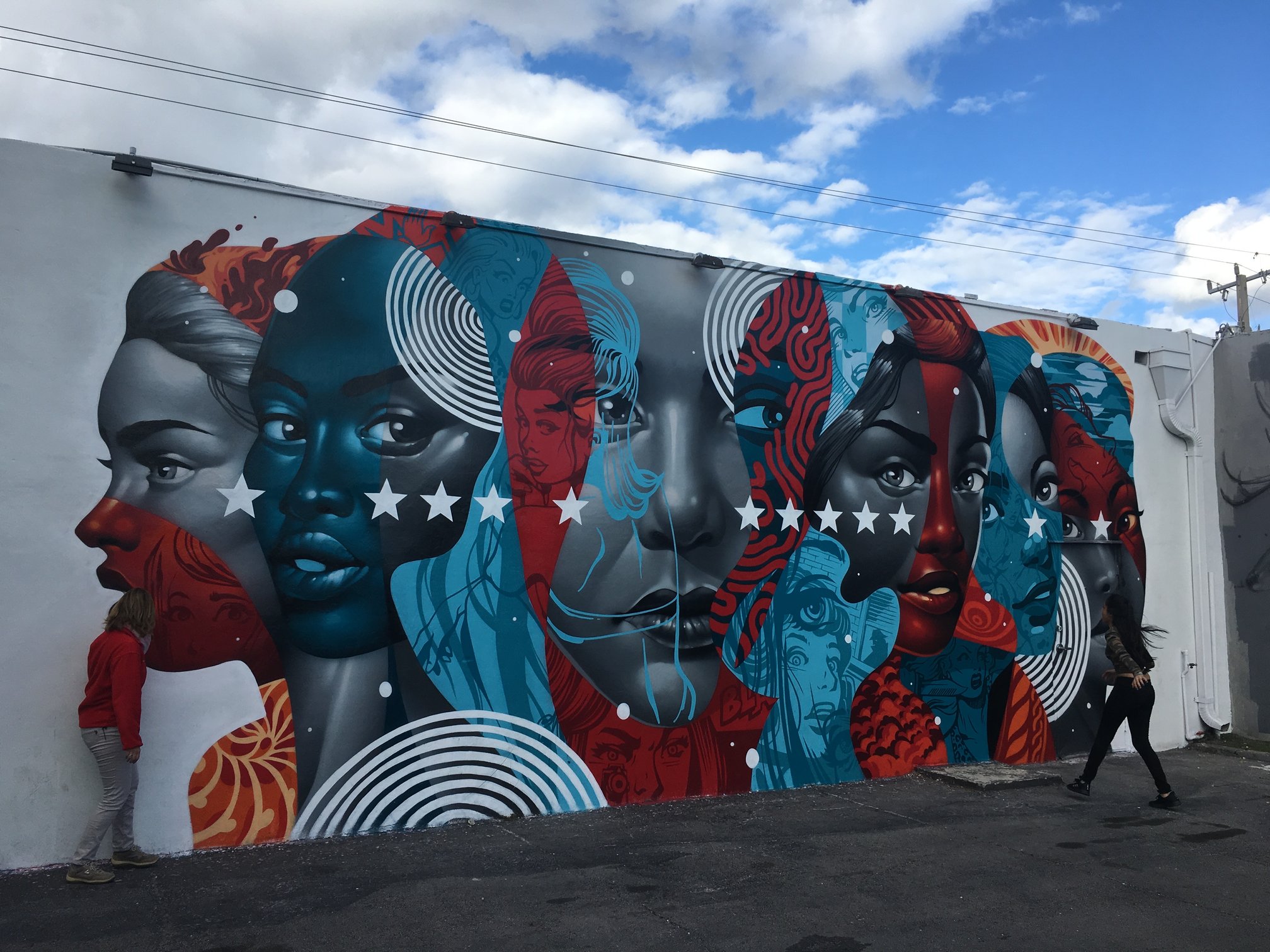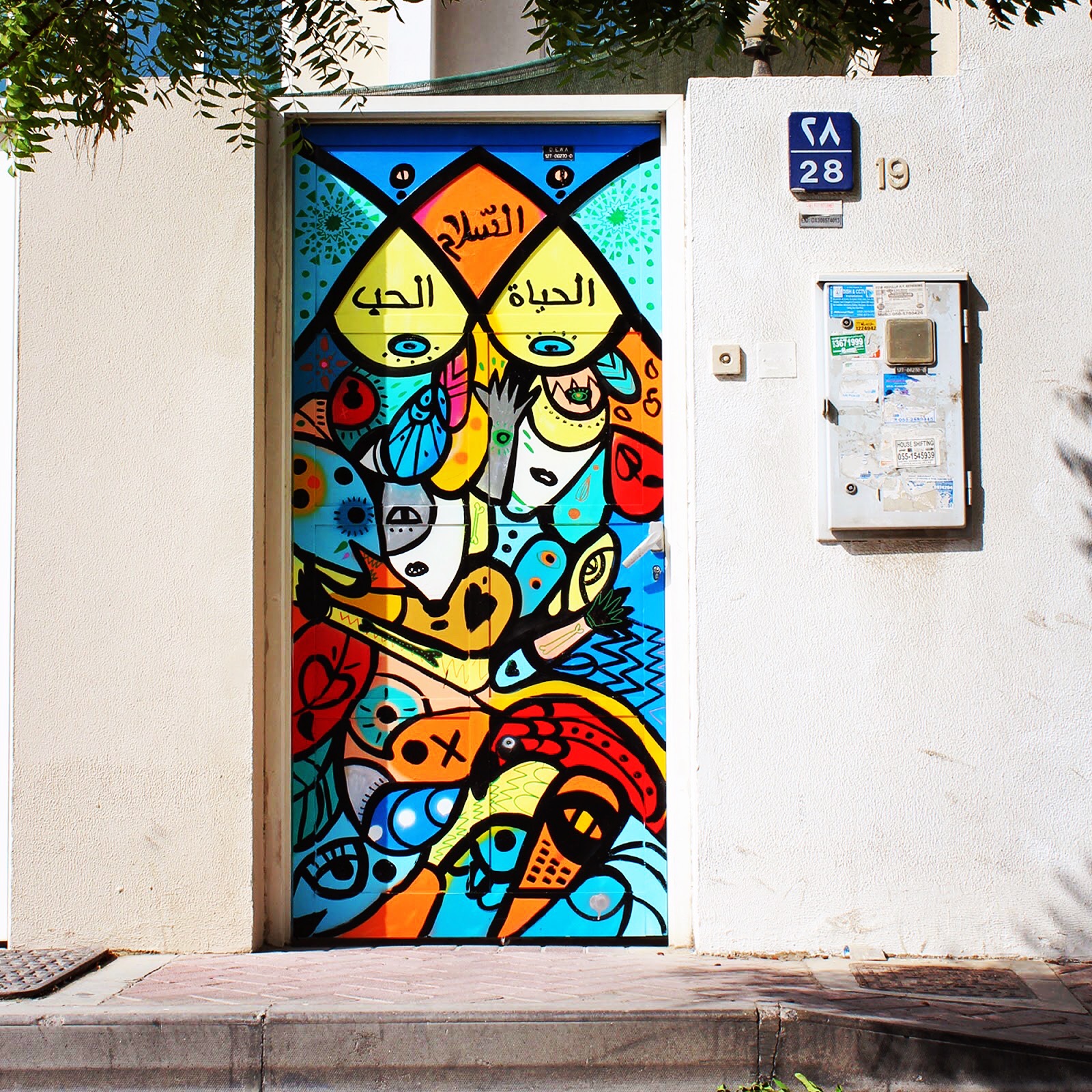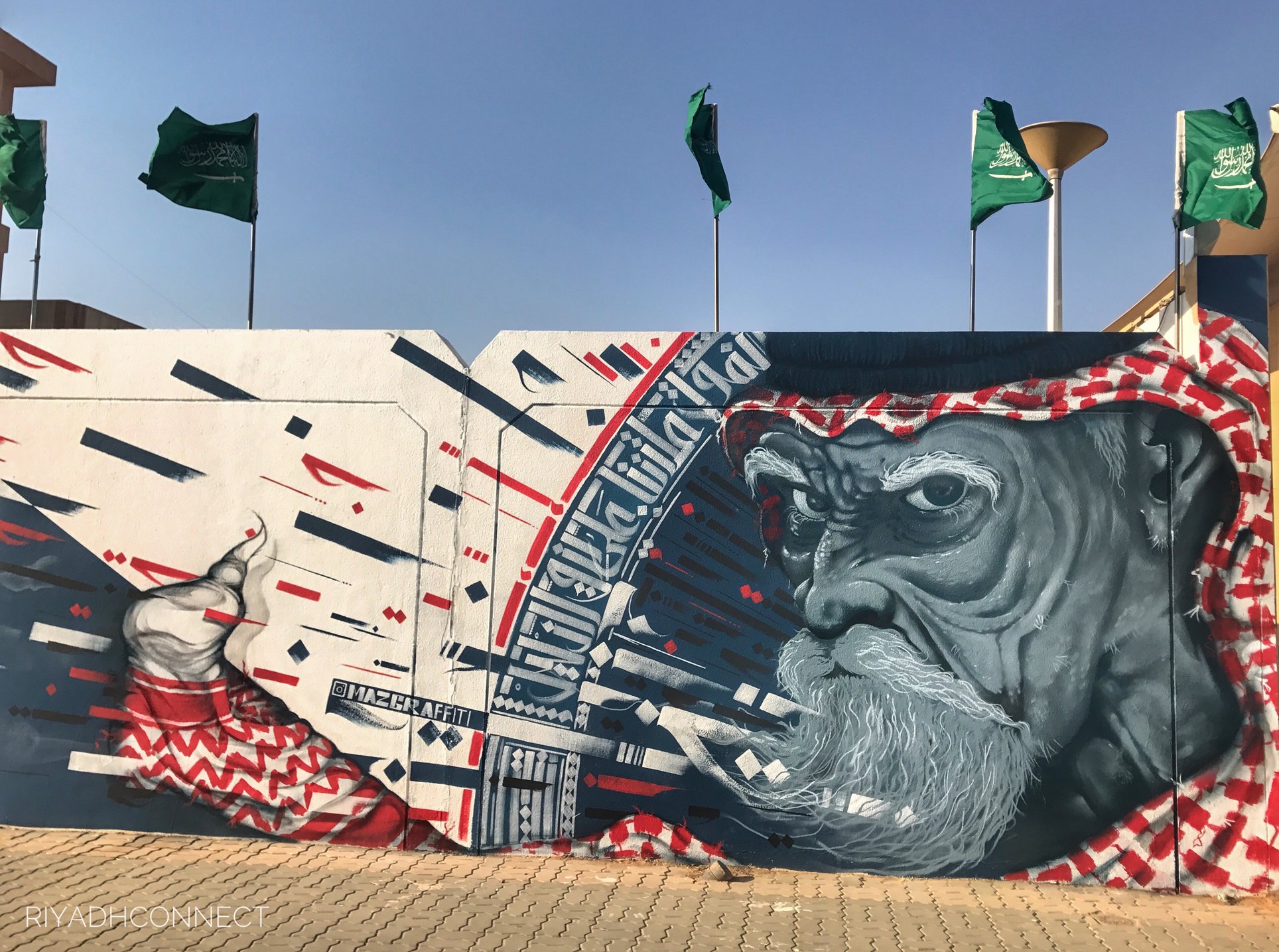By: Abdelrahman Amr and Michael Matthiesen.
In the third part in an Egyptian Streets article series under the name of East-West Chitchat that aims to spark increased dialogue between Americans and Egyptians, Abdelrahman Amr and Michael Matthiesen explore street art experiences in Egypt and the United States and their contribution to shaping the culture and life of a city.
As Millennials rise to adulthood, Graffiti has entered an age of social acceptance. Once considered an act of vandalism by previous generations, graffiti has become less stigmatized as a crime and now is accepted as street art.
Cities that once scrubbed graffiti from its walls have now embraced the spray paint and even dedicated parts of itself to the art form. This has revitalized areas like Shoreditch in London, Kensington in Toronto, Williamsburg in New York City, and Wynwood in Miami.
These neighborhoods have gone so far as to invite Graffiti artists to paint on its walls, helping to gentrify once rundown neighborhoods into popular boroughs. According to Egyptian Street Artist Ganzeer, “By making the city a place where creative, opinionated expression is free and visible, a city inevitably becomes a much greater joy to live in,” which has become very true for these neighborhoods.
Though many forms of graffiti are still illegal in the US in as it is considered an act of vandalism, the creation of controlled and regulated art districts have brought graffiti from being popular for 1990s gang tags to elaborate murals that have probably shown up somewhere on your Instagram feed. Mostly attributed to the rise of hipster culture in the US in the late 2000s, these art districts have come into the mainstream because of their colorful and eye-catching painted walls. But its the lasting nature of these murals has changed graffiti as a form of self-expression.
However, by mainstreaming graffiti street artists argue that, though this may be attractive to young entrepreneurs, it has demeaned the artform. “No urgency, no sting, no drive,” says Ganzeer, an Egyptian street artist, about ‘Instagramable’ neighborhoods like Wynwood, “Street-art ought to be a lot nobler than that.” The social acceptance of graffiti has removed the shock and awe that gave the art form its sting.
Graffiti by nature is a political statement, and good graffiti brings attention to the issues of the times in which it was created. According to Banksy, one of the greatest Graffiti artists in London “People say graffiti is ugly, irresponsible and childish… but that’s only if it’s done properly.”

Despite the fact that graffiti is becoming more socially acceptable globally, artists in Egypt are struggling to carry on the work they started following the 25 of January revolution in 2011. As freedom and optimism prevailed the Egyptian streets, graffiti artists were encouraged to paint messages about the revolution, political and social matters, and how they see the future of their country. Street art at that time was in a grey area, just like a number of other activities. Graffiti was also used to constantly protest against political figures who led the country after the famous protests, like the Supreme Council of Armed Forces ‘SCAF’ and the Muslim Brotherhood.
A set of good examples are the paintings made by an artist called El-Zeft and the ‘No Walls’ movement, who painted over government-installed concrete barriers used as a way to stop protesters and the police from clashing, yet blocking vital roads without resolving the main issue that first led to protests. The artist and the movement created paintings showing life beyond the walls and imagining a life without dull concrete blocks juxtapositioning the whole situation.
Nevertheless, the situation is currently quite different. There is a clear difference between Egypt and the US when it comes to dealing with graffiti, given that street art is ambiguous to the Egyptian culture and the country’s residents, thus, acquiring permissions for public painting is not an easy battle. Likewise, it’s hard for artists to create art spaces similar to Wynwood when they lack any public or governmental support.
“The problem is that right now you have no public space to have a sandwich, so imagine working on a huge mural for a few days, even if you’re working on a commercial piece, you’ll need tons of permits and approvals. We don’t have the same flexibility organizations and individuals have abroad,” said Aya Tarek, known as The Queen of Azarita, who started painting walls in 2008.
Tarek is considered to be one of the most influential artists in Egypt in addition to being internationally recognized for the work she produced in countries like Germany, Lebanon, the United States and Brazil.
The wall of the American University in Cairo in Mohamed Mahmoud street, a few steps away from Tahrir, were lethal clashes happened between protesters and the police was a great model for another important art-related battle, a battle over of who gets to paint the walls of Cairo. Protesters decided to claim the walls of this street after clashes ended while the government responded by painting over revolution murals. The next day, artists would paint new murals on the same wall defying authority. This artistic dispute repeated itself a few times over a short period of time.
“The culture is also not helping. You got a lot of building facades asking to be painted over but companies and owners would rather have ads on the facades instead of art, I find that [is] very stupid,” she added.
According to a study by Zipjet, Cairo was ranked one of the top 10 stressful cities in the world. Tarek thinks that walls in the city can be “mentally exhausting” due to the excessive amount of billboards which eventually dehumanizes residents.
Although the revolution allowed more freedom to artists to illustrate their thoughts, the period that followed barred most types of street arts, which forced artists to resort to commercialization.
“That’s the problem with capitalization, it turns a genuine movement to something that can easily lose its spirit, just like hip-hop, but that’s the way things work with everything now and it’s a natural evolution, so I certainly understand this, I just wanted craftsmen to not compromise their art.”
Jidar is one such example of a legal and government-approved use of graffiti. A startup founded by young artists that gathers painters under one umbrella connecting them with different types of clients who seek to develop murals for their businesses.
“If you want to generate revenues to be able to fund your personal art, you’ll need to compromise and meet every client’s need,” Jidar’s CEO Sara Gafaar explained. Gafaar, however, argues that a grey area can be reached in which businesses can become artistically and culturally educated to appreciate their work.










Comments (0)